- Details
- Hits: 3783
Station: Bessemer, MI
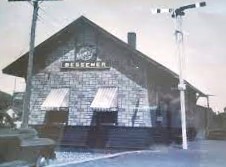
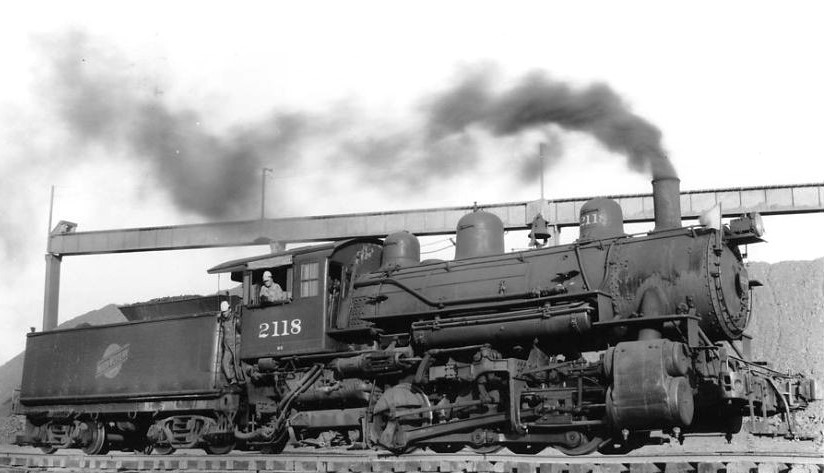
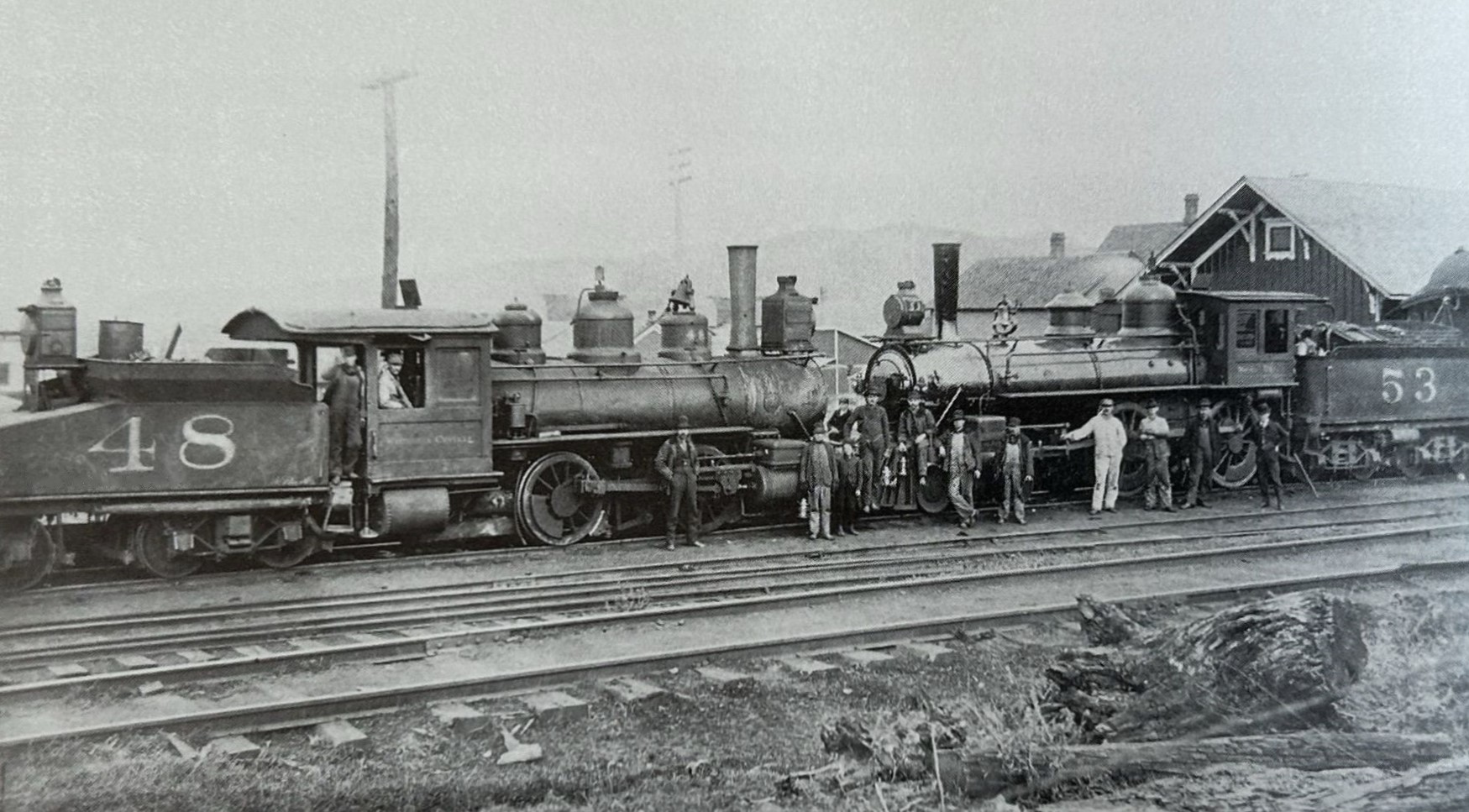
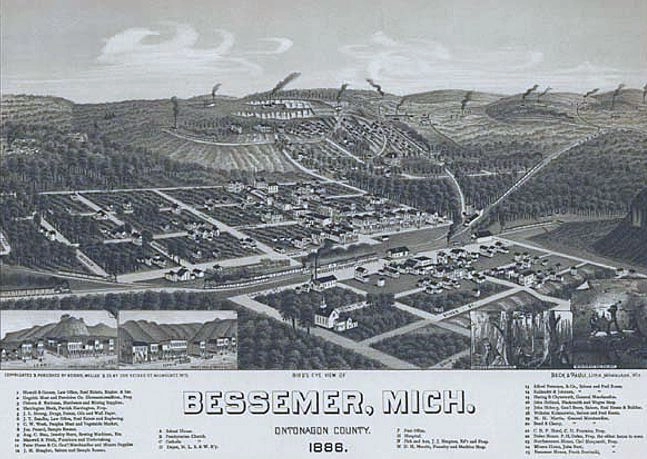 Bessemer was settled around 1880 after ore was discovered at the nearby Colby Mine. In 1884, the Milwaukee, Lake Shore & Western railroad (later C&NW) came to town making transportation of ore economical. Bessemer became a village in 1887 and a city in 1889. [MPN]
Bessemer was settled around 1880 after ore was discovered at the nearby Colby Mine. In 1884, the Milwaukee, Lake Shore & Western railroad (later C&NW) came to town making transportation of ore economical. Bessemer became a village in 1887 and a city in 1889. [MPN]
The Wisconsin Central arrived shortly after, with a depot on West Colby Street, west of Sophie Street. The C&NW depot was on East Lead Street, just east of Sophie Street. The depots were four blocks apart. [WBM-1908]
Photo Info: Top, a photo of the C&NW depot at Bessemer in the 1940's. [Bessemer Historical Society]. 2nd photo, C&NW 2118, a 0-6-0 switch engine, works at one of the mines near Bessemer around 1954. 3rd image, Wisconsin Central trains 48 and 53 join together for a photo opportunity at the Bessemer depot in 1899. 4th view, a panoramic view of Bessemer in 1888. The railroad is shown through the middle of town. The smoke in the distance is from area iron mines.
Notes
Bessemer was the name given to the town by F.W. Rhinelander, president of the Milwaukee, Lakeshore and Western railroad from a nearby mine named after Sir Henry Bessemer, the English inventor of the Bessemer process for the reduction of iron into steel. The town was platted by the railroad in 1884. [IWT-1942-0225]
Ironwood - Bessemer Map
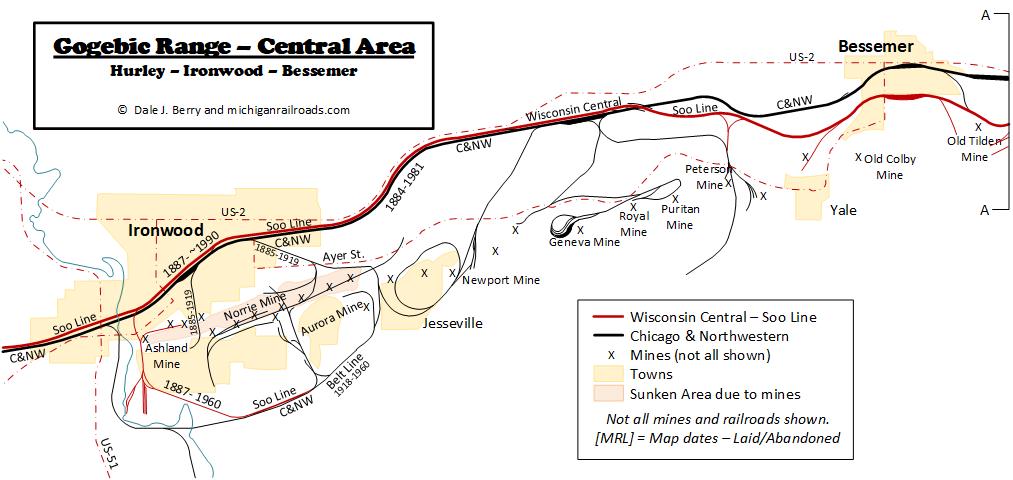
Region Time Line
See Ironwood timeline.
Local Time Line
Bessemer had a two-stall engine house as well as a sixty-foot turntable. [SOO-Sp/1996]
1889. October. John Rose fell under a railroad train at Bessemer the other day and was cut in two. [LDP-1889-1024]
1890. The C&NW Bessemer Station was built at US-2 and Sophie Street. [UPM]
1896. First Street Railroad Bridge. This bridge was constructed by the Wisconsin Bridge and Iron Company in 1896. It is 8' wide and 195' long. It consists of three spans resting on two steel piers and concrete abutments. The two approach spans 45' and 60' in length are steel deck girders while the main span is 90' in length and is a steel Pratt pony truss. [UPM] In addition to crossing over First Street, the MILW bridge also crossed over a C&NW spur to the Colby Mine.
1899. Mine Street Railroad Bridge. The Wisconsin Bridge and Iron Company constructed a three-span railroad bridge here in 1899. It is 10' wide and 100' long, resting on two steel piers and concrete abutments. There are two steel deck girder approach spans, each 25' long and a single steel through-plate girder span 50' long. [UPM] The bridge still exists in 2016 (without the railroad).
1918. The C&NW had telegraph operators here around the clock. [TRT]
1939. Pal, the German police dog owned by the McMinn family of S. Moore street, had to be chloroformed during the weekend as a result of being run over by a Soo Line railroad company snow plow. Pal was the most "gentlemanly" dog in town. He was well known in the community. He had a habit of attaching himself for several hours to various neighbors as they went downtown. When Pal had enough of this sort of escorting, or if his temporary attachment was going too far, he would turn around and go home or tend to other personal interests. [IDG-1939-0228]
1941. A crew of the bridge and building department of the C&NW railroad company is engaged in renovating and remodeling the depot here. Work has started and will continue for a week. Besides painting, new toilet facilities will be installed and the interior will be remodeled. [IDG-1941-0426]
1971. June. In a public notice, the Soo Line announces they intend to retire and remove their depot at Bessemer. [IDG-1971-0621]
1972. April. The old Soo Line building behind the city hall on Colby Street is being torn down. No longer used by the railroad, the building was sold to Lawrence Beaucham who is tearing it down for its lumber. No one seems to know when the building was built, but the construction date puts it around 1890-1900. Beauchamp found an old freight log book between the walls which was dated back to January, 1901. In any case, the building was built by the Wisconsin Central railroad and later taken over by the Soo Line.
Once, there was a pot-bellied stove in the central room of the depot and on long winter days the old timers would sit around playing cards and talking about times that were even then more than half-forgotten. The tracks behind what's left of the depot are now seldom used since the ore-trains stopped rolling. A Soo Line official said "nothing" is planned for the land after it is cleared. [IDG-1972-0406]
Industry
- Underwood Veneer Company sawmill employing 60 men. [IDG-1932-1231]
Bibliography
The following sources are utilized in this website. [SOURCE-YEAR-MMDD-PG]:
- [AAB| = All Aboard!, by Willis Dunbar, Eerdmans Publishing, Grand Rapids ©1969.
- [AAN] = Alpena Argus newspaper.
- [AARQJ] = American Association of Railroads Quiz Jr. pamphlet. © 1956
- [AATHA] = Ann Arbor Railroad Technical and Historical Association newsletter "The Double A"
- [AB] = Information provided at Michigan History Conference from Andrew Bailey, Port Huron, MI

